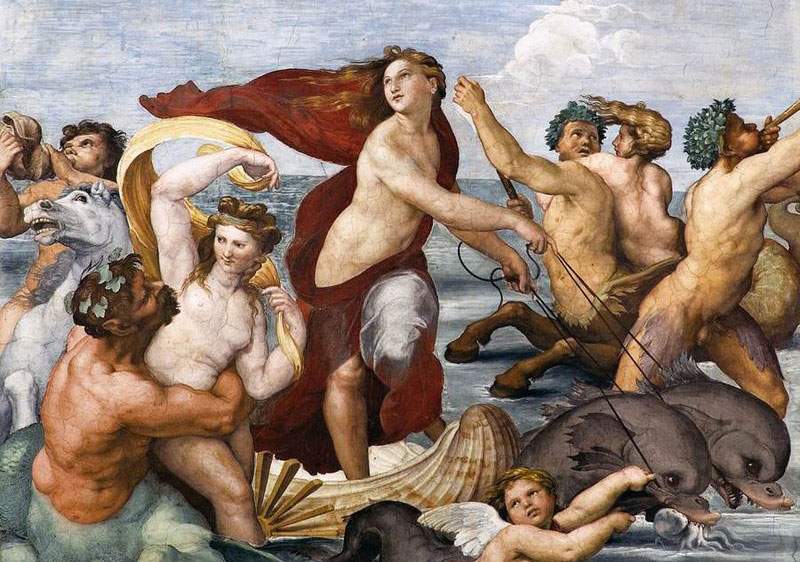Egyptian blue in the Galatea of the Villa Farnesina. Exceptional discovery about Raphael
Research conducted on the materials of the Villa Farnesina fresco depicting the nymph Galatea has revealed that for the blue-colored parts, such as the maiden’s eyes, the sky and the sea, the great Urbino painter Raphael Sanzio used so-called Egyptian blue. The latter color had never been used since the end of the Roman Empire, later replaced by lapis lazuli, and the artist was able to recreate it in his workshop through a real experiment: it is in fact the first artificial color in history.
The study was led by Antonio Sgamellotti, academician of the Lincei, and carried out together with ENEA, IRET-CNR, Laboratory of Diagnostics for Cultural Heritage in Spoleto, XGLab-Bruker. It will be presented on the occasion of the exhibition Raphael in Villa Farnesina. Galatea and Psyche to be held from October 6, 2020 to January 6, 2021 in the same Villa and curated by Antonio Sgamellotti and Virginia Lapenta.
The curator stated that “this is the first time that this pigment has been found in a work by Raphael, whose use for Galatea, not surprisingly a mythological subject, may have arisen precisely from the Urbino artist’s studies and great interest in the ancient world.”
The non-invasive analyses conducted on the colors of the Galatea were not only devoted to blue. In fact, it was discovered, according to Sgamellotti, that cinnabar typical of Pompeii was used for the cloth that wraps Galatea’s sides. A pigment this time not uncommon, but one that Raphael used only as a finish, as it was a color unsuitable for the fresco technique.
It should also be noted that Egyptian blue appears in Galatea’s Loggia only in the fresco depicting the beautiful nymph: in the Polyphemus painted by Sebastiano del Piombo, a fresco that flanks Galatea, the sky blue was accomplished with lapis lazuli.
In addition to the presentation of this discovery, the exhibition will also be an opportunity to admire for the first time the drawings discovered in the 1970s on the plaster of the lower part of the walls with the Polyphemus and the Galatea, usually hidden by nineteenth-century false curtains.
Image: Raphael Sanzio, Triumph of Galatea, detail (c. 1512; fresco, 295 x 225 cm; Rome, Villa Farnesina)
 |
| Egyptian blue in the Galatea of the Villa Farnesina. Exceptional discovery about Raphael |
Warning: the translation into English of the original Italian article was created using automatic tools. We undertake to review all articles, but we do not guarantee the total absence of inaccuracies in the translation due to the program. You can find the original by clicking on the ITA button. If you find any mistake,please contact us.





























